
Abstract
In this essay I have investigated different aspects of the Harajuku street style, focusing on what shapes the fashion and what drives the people of Harajuku to look the way they do. In my research I found out that the two most influential factors are the kawaii, the cute, and the Western trends. The Japanese obsession with cuteness exists in both mainstream and underground cultures and, depending on how it’s displayed, it is therefore praised or disliked by society. During my research on Japan and the West and their influences it became clear that both sides take from one another, rather than just one being influenced by the other. The West is just as big an obsession in Japan as Japan is in the West. We live in a system of constant style-swapping where ‘nothing is purely innovative or imitative and the process of repetition always introduces an element of metamorphosis’ (Groom, 2011). The Japanese have proved to exceed at changing the meaning and mixing and matching items which do not suit one another at a first glance. Like their city, they combine East and West, past and present with a skill which speaks of an un-rushed intensity.
Obsession: the Drive of the Harajuku Subculture
an essay by Sara Christova
lecturer: Cath Davies
Introduction
When visiting Japan, Tokyo is stop number one and in Tokyo the Harajuku area, Shibuya and Shinjuku are some of the most interesting places to see. As the epicentre of street fashion, they can be considered stages for the unprofessional enthusiasm of the Japanese who have been branded as the weird, the strange, the quirky; the deviants of Tokyo. The Harajuku subculture, if we could call it such, can be easily recognized by the vivid, unorthodox outfits of its followers, which are personally, carefully designed to stand out. Although when we refer to it as a single subculture we make a mistake, for the different styles, fashions and trends within it are too distinct to be filed under the same category. Each subculture is centred around a certain idea, an idea which has become the obsession of its members – the kawaii, or the ‘cute’ of the Decora, the anime and manga of the Otaku, the lace and Victorian-era clothing of the Lolitas, the leather and crazy hairstyles of the Punk. The subcultures of Harajuku, however different from one another, also possess similar qualities – they all have a complicated web of connotations, enforced by the numerous layers, accessories, colours and patterns that they use, where each and every item or piece of clothing comes with its own meaning and personal value. These items are specifically chosen, mixed and matched with others and placed in a distinct way in order to give a certain impression or invoke different thoughts or emotions.
The un-rushed delicate intensity with which the Japanese go about their everyday lives is what makes the style what it is. Picking and combining the right accessories is a time-consuming practice which proves the dedication and reverence with which these people regard their style. The trends are religion, the accessories are relics and the best dressed people are deities.
Kawaii, the Fatal Attraction to Cuteness
 Ever-changing, ever-growing and developing, the Harajuku fashion is dictated by its own followers. This is the place where the fashion icons aren’t the models on the billboards but the very people on the streets we walk on. It is common in Tokyo to be approached by photographers who want to take pictures of you for one magazine or other. It’s what drives these teenagers to dress the way they do. The brighter you shine, the better your chance is of being noticed, of being recognized as different. Like most young adults in the world, that is one of our strongest drives – the wish to be seen as unique but also to be accepted as such. Harajuku is a place that is in a way dedicated to that purpose. As a part of Tokyo, the Harajuku style is strongly influenced by, the kawaii, or the ‘cute’, as it is an obsession that goes from the most commercial mainstream circles to the deepest underground communities. The idea behind it may be twisted and represented in different lights depending on the individual preferences and ideas of each person, but it exists everywhere.
Ever-changing, ever-growing and developing, the Harajuku fashion is dictated by its own followers. This is the place where the fashion icons aren’t the models on the billboards but the very people on the streets we walk on. It is common in Tokyo to be approached by photographers who want to take pictures of you for one magazine or other. It’s what drives these teenagers to dress the way they do. The brighter you shine, the better your chance is of being noticed, of being recognized as different. Like most young adults in the world, that is one of our strongest drives – the wish to be seen as unique but also to be accepted as such. Harajuku is a place that is in a way dedicated to that purpose. As a part of Tokyo, the Harajuku style is strongly influenced by, the kawaii, or the ‘cute’, as it is an obsession that goes from the most commercial mainstream circles to the deepest underground communities. The idea behind it may be twisted and represented in different lights depending on the individual preferences and ideas of each person, but it exists everywhere.
Kawaii usually translates to “cute”. Whenever a girl sees something she really likes and/or finds cute, she would exclaim that word. Whatever you may think, kawaii isn’t a brand or a style in which something is made. Kawaii is, according to a girl in the Shibuya district “a state of mind and a lifestyle. My whole life is about being kawaii. I’m always thinking about how I can make myself even more kawaii.” (Kawamura, 2006, p795) Kawaii cannot be exactly defined but ‘a feeling’ is a good way to describe it. You can’t explain it, but when you see it you’ll immediately know.
Mary L., 18, who is familiar with the Japanese culture and subcultures from firsthand experience, explained that the people of Harajuku are viewed as degenerate and appalling by the non-Harajuku Japanese. There is a parallel between Harajuku and kawaii, but there is a thin line separating what is acceptable and what isn’t, since kawaii is part of the mainstream culture as well as the Harajuku subcultures – it is expected of Japanese girls to be kawaii, and if they aren’t they are considered too masculine. If they have ‘too much kawaii’, like the Decoras for example, they are frowned upon. Just like how you have to be weird to fit in at Harajuku/Shibuya/Shinjuku, you have to be normal to fit in everywhere else. It is incredibly uncommon to see a person dressed in Harajuku fashion outside their designated territories and it’s slightly less uncommon to see a person like that on a weekday during work hours anywhere, even in the defined Harajuku places (except for the people that work in the industries catering to these styles, like the shops on Takeshita Dori).
Obsession with Style
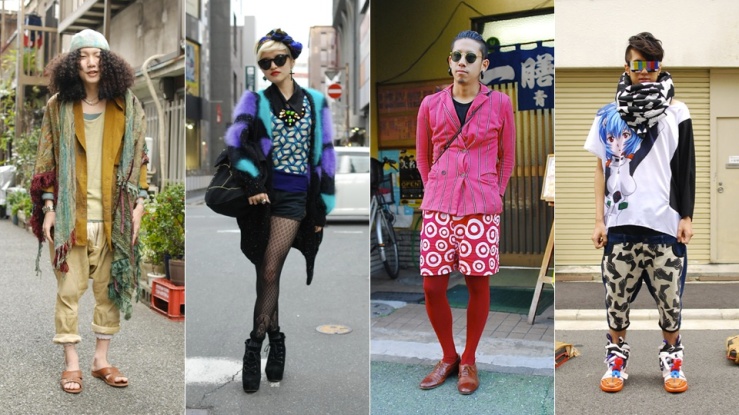
A former managing editor of Tokion, a fashion and art magazine in Tokyo, Alex Wagner, says that “Japanese culture is very ritualistic. They get hung up on one thing and then it becomes this feverish race to get as many of those things as possible’ (Kawamura, 2006). Once they decide a certain person is a fashion icon, they religiously keep up with every little piece of information – like the latest Tweeter posts, Instagram photos or Facebook status updates. In a world dominated by technology, social networking has become one of the easiest ways to get the latest info on the newest items and the freshest trends.
The world of Harajuku, just like any other, is ruled by clique exclusivity, and different styles occupy different territories. Upon closer inspection you see a division between the members of the subculture. In Shinjuku people mostly dress up as Goths and Lolitas; in Shibuya the leading fashion is western subculture fashion (Punk, B-boy, Emo, Mod, Skinhead, etc.) either on its own but exaggerated, naturally, or fused with newer, more popular, sometimes even more mainstream, fashion. The result can be stunning and frightening and sometimes both at the same time.
While people (foreigners or locals with less knowledge of the subcultural trends and tendencies) often refer to the three parts as the singular Harajuku, the actual Harajuku area is where the most interesting and creative mixes often appear. The streets there are the home of the Shironuri (or ‘whiteface’) and Decora (from ‘decoration’). Both being very similar in their over-decorative tendencies – Shironuri and Decora just can’t get enough accessories! Hundreds of pins, bracelets, socks with different patterns, lengths and styles, countless pins and key chains, and earrings, and ribbons, and hairbands, and every possible mini-accessory; they’re just not enough. The only significant difference between the Shironuri and the Decora for us, the unenlightened, is that the faces of the Shironuri are painted in white.
Minori is a very famous Shironuri in Harajuku, who, despite her unearthly appearance, is an ordinary 23 year-old girl with exceptional skills as an artist (she is her own makeup artist, her own designer, decorator, she makes her own clothes and works in her own style to create series of conceptual photographs starring her in different artistically captivating outfits, also an illustrator in the meantime). Not everyone will appreciate the lengths to which this girl is willing to go in order to maintain the image she has created for herself in society – she wears amounts of makeup that even actors and clowns don’t wear, and she does that every single day just in order to feel like herself. It sounds hard but when someone’s obsession is how they look, they will do whatever they can to feel comfortable and if that includes wearing a ton of makeup and unorthodox, flowing dresses and gowns, and looking cute, then so be it.
Apart from the Shironuri and the Decora, there are a lot more fashion groups that roam the streets of Harajuku. One of them would be the people who dress in the latest western fashion, but of course, that comes with the Japanese specialty of mix & match. Harajuku-type hipsters and people who look like they could model on the pages of world renowned fashion magazines such as Vogue, Marie Claire or Elle walk casually, waiting for people to go say hi and talk to them, and appreciate each other’s kawaii-ness. There is actually a series of photos of some Harajuku fashion innovators, which were originally shot for Vogue.com, during the Tokyo Fashion Week in March (Tokyofashion.com, 2014) and as we know, to say that Vogue is a leading influence on Western fashion would be an understatement.
The East/West Obsession Paradox
 In 1954 Frank Lloyd Wright said: ‘I have never confided to you the extent to which Japanese print per se has inspired me. I never got over my first experience with it and I shall never, probably, recover. I hope I shan’t.’ Japan and the Western cultures have a long history of artistic influencing. ‘Japonisme’ is a word which best describes that relation. It was ‘coined’ by the French author and collector Philippe Burty ‘to designate a new field of study of artistic, historic and ethnographic borrowings from the arts of Japan’. To eyes sated with Neoclassicism and the Gothic revival, Japanese art was far more than a refreshing visual novelty (Lambourne, 2005). So where does that leave us today? “A Ping-Pong match between Eastern and Western” (Stefani, 2004) is a very exact way of putting it.We can see a lot of influence from Eastern street culture and a very obvious example is Gwen Stefani’s album, Love.Angel.Music.Baby. from 2004, where the Harajuku style is openly praised, especially in the song Harajuku Girls. Another very clear example would be Avril Lavigne’s new song Hello Kitty, where she exclaims “k-k-k-kawaii!” between every verse and is dressed in what seems to be a Punk/Lolita/Decora mix fashion. The interesting part in this case is that people weren’t surprised by the style itself, because it is something we’re all familiar with, even if remotely. The big surprise came from Avril’s choice to engage in that subcultural style. The music industry today, being as dependent on appearances as it is, has started popularizing unconventional looks and behaviour, which is best represented by Lady Gaga’s unnatural and frankly shocking costumes and performances, followed by Rihanna, Katy Perry and Nicki Minaj’s exaggerated looks, along with Paramore lead singer Hailey Williams and her sugary new style, shocking, unnatural and unorthodox ways of dressing have become something more usual and familiar, and therefore something easier for us to comprehend.
In 1954 Frank Lloyd Wright said: ‘I have never confided to you the extent to which Japanese print per se has inspired me. I never got over my first experience with it and I shall never, probably, recover. I hope I shan’t.’ Japan and the Western cultures have a long history of artistic influencing. ‘Japonisme’ is a word which best describes that relation. It was ‘coined’ by the French author and collector Philippe Burty ‘to designate a new field of study of artistic, historic and ethnographic borrowings from the arts of Japan’. To eyes sated with Neoclassicism and the Gothic revival, Japanese art was far more than a refreshing visual novelty (Lambourne, 2005). So where does that leave us today? “A Ping-Pong match between Eastern and Western” (Stefani, 2004) is a very exact way of putting it.We can see a lot of influence from Eastern street culture and a very obvious example is Gwen Stefani’s album, Love.Angel.Music.Baby. from 2004, where the Harajuku style is openly praised, especially in the song Harajuku Girls. Another very clear example would be Avril Lavigne’s new song Hello Kitty, where she exclaims “k-k-k-kawaii!” between every verse and is dressed in what seems to be a Punk/Lolita/Decora mix fashion. The interesting part in this case is that people weren’t surprised by the style itself, because it is something we’re all familiar with, even if remotely. The big surprise came from Avril’s choice to engage in that subcultural style. The music industry today, being as dependent on appearances as it is, has started popularizing unconventional looks and behaviour, which is best represented by Lady Gaga’s unnatural and frankly shocking costumes and performances, followed by Rihanna, Katy Perry and Nicki Minaj’s exaggerated looks, along with Paramore lead singer Hailey Williams and her sugary new style, shocking, unnatural and unorthodox ways of dressing have become something more usual and familiar, and therefore something easier for us to comprehend.
Just like the popularization of the Japanese comic books known as manga and their invasion in the Western market, this style breaks the boundaries of the two cultures. By influencing each other, they reach a state of constant style-swaps. They’re almost trying to outweird each other, like Johnny Depp once said about him and Helena Bonham Carter. Donald Richie writes in his book Tokyo that “…Tokyo insists on its modernity. It always has. For a century now Tokyo has been known as ‘the city of contrasts’ or ‘the capital of the old and the new’. Ever since its opening to the outside world in the middle of the last century, Tokyo has with increasing skill combined East and West, past and present.” The evidence of this statement can be seen not only in the architecture, technology and culture (sports and arts) but also in fashion, both on the billboards and in the subcultural underground scene.
Tokyo’s street fashion innovators flawlessly combine traditional Japanese items like the “kimono, obi belts, kanzashi hairpins and geta sandals” (Aoki, 2001) modern avant-garde, Japanese couture, contemporary and retro Western fashion (Groom, 2011) and thus create completely new trends (such as Wa-Mono) and original looks that are meant to be unique, innovative, interesting, and most importantly, to stand out.
Conclusion
Harajuku, Shibuya and Shinjuku are doubtless interesting places to see and valuable artistic resources, no matter what people say. While the West views Harajuku as a street fashion heaven and a stage for even the weirdest of tastes, the non-Harajuku Japanese see it as a degenerative and unpleasant place. That fortifies the idea of the Harajuku subculture. Although we refer to it as a single item, the different styles, fashions and trends within it are too distinct to be filed under the same category. Harajuku can be best described as a subculture comprised of a number of different subcultures, sublimated and Japanized but subcultures nonetheless. It is undeniable that the subcultures of Harajuku possess similar qualities – they all have a complicated web of connotations, enforced by the numerous layers, accessories, colours and patterns, where each item comes with its own meaning and personal value. These items are specifically chosen, matched with others and placed in order to give a certain impression or invoke a certain thought or emotion.
The un-rushed delicate intensity with which the Japanese go about their everyday lives manifests itself in a completely different light in the hands of the teenagers who run the streets of Shibuya, Harajuku and Shinjuku. As they pay attention to every little detail, picking and mixing the right accessories is a time-consuming practice. This shows how dedicated and motivated these people are and how much they rely on the outer appearance. The trends are religion, the accessories are relics and the best dressed people are deities. The people of Harajuku obsess over the trends, over accessories and people. Obsessing over things is a daily routine. Obsessing over something that is kawaii, or cute (Decora), over animes and manga (Otaku), over painting your face white (Shironuri)… The obsessions of the followers are the fuel of the subculture. They are what drives this sea of colour, this kaleidoscope of fashion (Stefani, 2004), this hyper-reality that is the Harajuku street style.
***
Bibliography
Aoki, S. (2001) Fruits, Phaidon Press Limited, London
Cooke, L. and Wollen, P. (ed.) (1995) Visual Display: Culture Beyond Appearances, Bay Press, Seattle
Elliott, D. and Ozaki, T. (2011) Bye Bye Kitty!!!, Japan Society Inc., Yale University Press
Groom, A. (2009) Fashion and Identity in Harajuku. In: Craik, J. (2009) Fashion: The Key Concepts, Berg Publishing, Oxford, pp159-161
Groom, A. (2011) Power Play and Performance in Harajuku, New Voices Volume 4, University of Technology, Sydney
Hebdige, D. (1979) Subculture: The Meaning of Style, Routledge, London and New York
Hume, N. G. (ed.) (1995) Japanese Aesthetics and Culture: A Reader, State University of New York Press, Albany
Kawamura, Y. (2006) Japanese Teens as Producers of Street Fashion, Current Sociology [Electronic] Available: http://csi.sagepub.com/content/54/5/784, [17 Aug 1006]
Lambourne, L. (2005) Japonisme: Cultural Crossings between Japan and the West, Phaidon Press Limited, London
Okazaki, M. and Johnson, G. (2011) Kicks Japan, Mark Batty Publisher, New York
Richie, D. (1999) Tokyo, Reaktion Books Ltd, London
SILVIAN HEACH (2014) Tokyo Streets [WWW] http://www.silvianheach.it/prt/en-gb/CMS/Index/MAGAZINE/2014/04/18/tokyo-streets/ (18 Apr 2014)
STEFANI, G. (2004) Harajuku Girls; Love.Angel.Music.Baby, EMI Music Publishing, Warner/Chappel Music Inc.
Watanabe, H. (1992) Continutity and Change in Harajuku, Japan Quarterly, Pro Quest Art, Design and Architecture Collection, pp238-250
Woodward, K. (ed.) (2002) Identity and Difference, Sage Publications, London
List of Illustrations
TOKYOTAMASHII (2013) Kyary and Harajuku Kawaii, [WWW] http://stuffpoint.com/kyary-pamyu-pamyu/image/338892/kyary-and-harajuku-kawaii-picture/
SILVIAN HEACH (2014) Tokyo Streets [WWW] http://www.silvianheach.it/prt/en-gb/CMS/Index/MAGAZINE/2014/04/18/tokyo-streets/ (18 Apr 2014)
SILVIAN HEACH (2014) Tokyo Streets [WWW] http://www.silvianheach.it/prt/en-gb/CMS/Index/MAGAZINE/2014/04/18/tokyo-streets/ (18 Apr 2014)
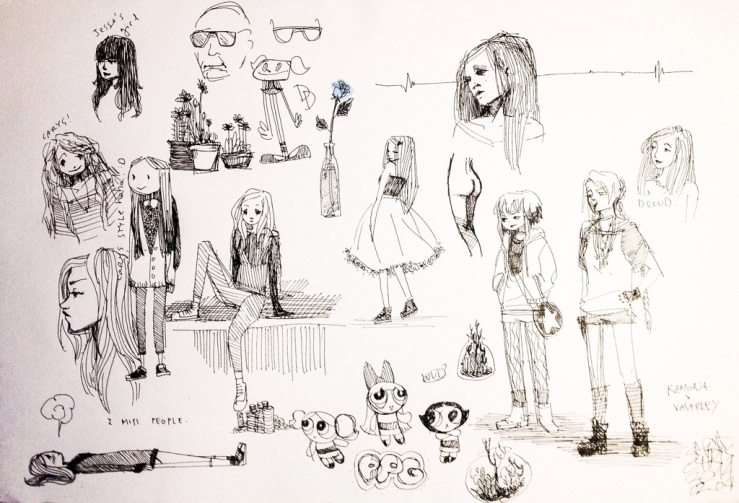

 Ever-changing, ever-growing and developing, the Harajuku fashion is dictated by its own followers. This is the place where the fashion icons aren’t the models on the billboards but the very people on the streets we walk on. It is common in Tokyo to be approached by photographers who want to take pictures of you for one magazine or other. It’s what drives these teenagers to dress the way they do. The brighter you shine, the better your chance is of being noticed, of being recognized as different. Like most young adults in the world, that is one of our strongest drives – the wish to be seen as unique but also to be accepted as such. Harajuku is a place that is in a way dedicated to that purpose. As a part of Tokyo, the Harajuku style is strongly influenced by, the kawaii, or the ‘cute’, as it is an obsession that goes from the most commercial mainstream circles to the deepest underground communities. The idea behind it may be twisted and represented in different lights depending on the individual preferences and ideas of each person, but it exists everywhere.
Ever-changing, ever-growing and developing, the Harajuku fashion is dictated by its own followers. This is the place where the fashion icons aren’t the models on the billboards but the very people on the streets we walk on. It is common in Tokyo to be approached by photographers who want to take pictures of you for one magazine or other. It’s what drives these teenagers to dress the way they do. The brighter you shine, the better your chance is of being noticed, of being recognized as different. Like most young adults in the world, that is one of our strongest drives – the wish to be seen as unique but also to be accepted as such. Harajuku is a place that is in a way dedicated to that purpose. As a part of Tokyo, the Harajuku style is strongly influenced by, the kawaii, or the ‘cute’, as it is an obsession that goes from the most commercial mainstream circles to the deepest underground communities. The idea behind it may be twisted and represented in different lights depending on the individual preferences and ideas of each person, but it exists everywhere.



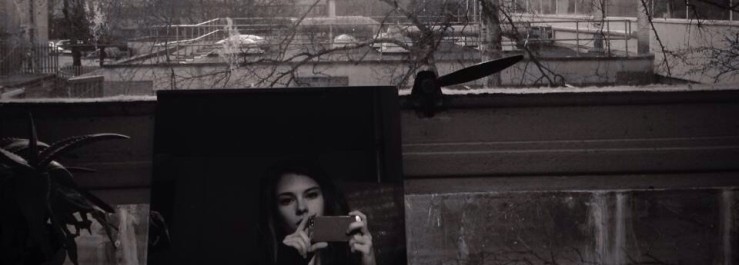

![IMG_1911[1]](https://saritasiniorita.wordpress.com/wp-content/uploads/2013/12/img_19111-e1399843640789.jpg?w=739)
![IMG_1184[1]](https://saritasiniorita.wordpress.com/wp-content/uploads/2013/10/img_11841-e1399843502172.jpg?w=739)
![IMG_3575[1]](https://saritasiniorita.wordpress.com/wp-content/uploads/2014/05/img_35751.jpg?w=347&h=260)
![IMG_3574[1]](https://saritasiniorita.wordpress.com/wp-content/uploads/2014/05/img_35741.jpg?w=196&h=261)
![IMG_3573[1]](https://saritasiniorita.wordpress.com/wp-content/uploads/2014/05/img_35731.jpg?w=194&h=259)
![IMG_3572[1]](https://saritasiniorita.wordpress.com/wp-content/uploads/2014/05/img_35721.jpg?w=347&h=260)
![IMG_3571[1]](https://saritasiniorita.wordpress.com/wp-content/uploads/2014/05/img_35711.jpg?w=322&h=241)
![IMG_3576[1]](https://saritasiniorita.wordpress.com/wp-content/uploads/2014/05/img_35761.jpg?w=217&h=242)
![IMG_3569[1]](https://saritasiniorita.wordpress.com/wp-content/uploads/2014/05/img_35691.jpg?w=739)
![IMG_3529[1]](https://saritasiniorita.wordpress.com/wp-content/uploads/2014/05/img_35291.jpg?w=739)
![IMG_3536[1]](https://saritasiniorita.wordpress.com/wp-content/uploads/2014/05/img_35361.jpg?w=739)
![IMG_3535[1]](https://saritasiniorita.wordpress.com/wp-content/uploads/2014/05/img_35351.jpg?w=739)
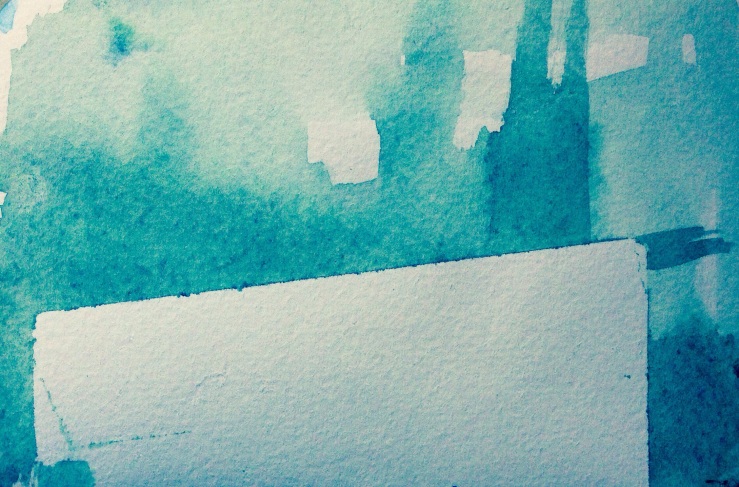
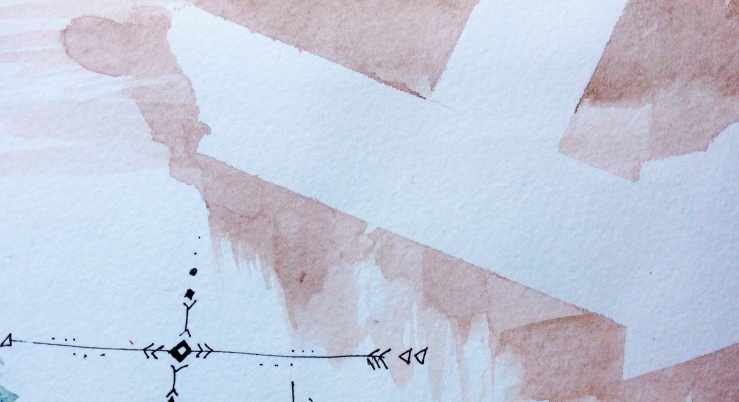
![IMG_3543[1]](https://saritasiniorita.wordpress.com/wp-content/uploads/2014/05/img_35431.jpg?w=270&h=171)
![IMG_3534[1]](https://saritasiniorita.wordpress.com/wp-content/uploads/2014/05/img_35341.jpg?w=266&h=169)
![IMG_3533[1]](https://saritasiniorita.wordpress.com/wp-content/uploads/2014/05/img_35331.jpg?w=739)


![IMG_3537[1]](https://saritasiniorita.wordpress.com/wp-content/uploads/2014/05/img_35371.jpg?w=242&h=379)
![IMG_3539[1]](https://saritasiniorita.wordpress.com/wp-content/uploads/2014/05/img_35391.jpg?w=242&h=379)
![IMG_3538[1]](https://saritasiniorita.wordpress.com/wp-content/uploads/2014/05/img_35381.jpg?w=739)
![IMG_3542[1]](https://saritasiniorita.wordpress.com/wp-content/uploads/2014/05/img_35421.jpg?w=739)
![IMG_3540[1]](https://saritasiniorita.wordpress.com/wp-content/uploads/2014/05/img_35401.jpg?w=739)